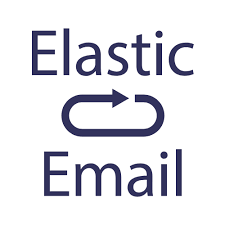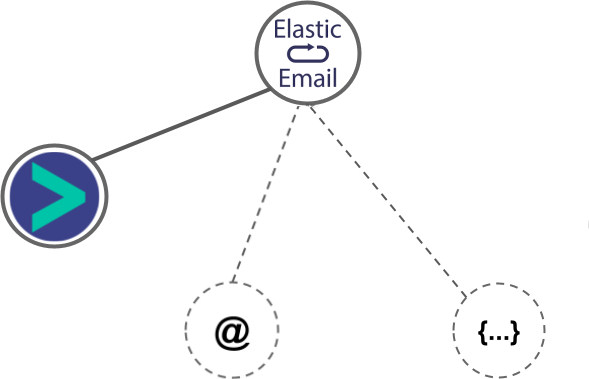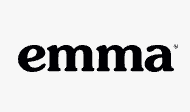Elastic Email vs Mailchimp
Hyperise integrates with 100's of sales and marketing tools, many of which are in the Email Marketing category. With so many to choose from it's sometimes hard to know which is best, but don't worry, we've got your covered.
In this comparison guide we're going to look at the Highlights, Pros, Cons and Pricing of Elastic Email and Mailchimp. We'll also delve into the details of which offers the best personalization options within Email Marketing, with there respective Hyperise integrations

Elastic Email
Pricing: Elastic Email has a pay-as-you-go pricing plan. It charges $0.09 per thousand emails requested with a minimum of $15 when you top up your account. Additionally, Elastic Email offers monthly subscription plans from $15/month for up to 800,000 emails. Prices can vary depending on the type of user and the number of emails requested.
Vs
Mailchimp
Pricing: Mailchimp offers both free and paid plans. The free plan offers up to 2,000 subscribers and 12,000 emails per month. After that, plans start at $9.99 per month for up to 500 subscribers and an unlimited amount of emails. Plans for larger amounts of subscribers are also offered.Elastic Email vs Mailchimp Highlights
Elastic Email and Mailchimp are both email marketing automation tools that help businesses build relationships with their customers and increase engagement. However, there are some notable differences between the two.
Elastic Email offers more features, such as fewer restrictions on the number of contacts, a wide range of features like automation, A/B testing, detailed analytics and reports, more customization, and more expansive templates. Additionally, Elastic Email is less expensive compared to Mailchimp, offering one flat rate.
Mailchimp, on the other hand, includes fewer features than Elastic Email and is therefore easier to learn how to use. It also offers a free version for groups of 2,000 or fewer contacts. Additionally, Mailchimp has more integrations with other services, offering more opportunities for businesses to connect their existing systems with their marketing automation system.
Both offer their users a great way to nurture leads, build relationships, and increase engagement. Ultimately, which tool is best for you will depend on your preferences, budget, and business needs.
Elastic Email vs Mailchimp Pros
Elastic Email Pros
- Pros of Elastic Email compared to Mailchimp:
- Low cost for high volume emailing
- Easier to personalize emails for each recipient
- Ability to segment lists for targeted messaging
- Money back guarantee on all paid plans
- More advanced analytics and reporting
- Better deliverability rates
- Multiple sending domains and IPs for greater flexibility
- More user-friendly interface
- Detailed documentation and tutorial library
Mailchimp Pros
- Mailchimp Pros
- Ease of use and intuitive user interface, making it suitable for small businesses and start-ups
- Rich analytics and reporting, with detailed insights into campaign performance
- Automation features enable sophisticated marketing campaigns
- Integration with ecommerce tools and CRMs, allowing a single platform for managing all customer communications
- Wide range of templates and designs to get started quickly
- High deliverability rate and free deliverability analytics
Elastic Email vs Mailchimp Cons
Elastic Email Cons
- Strategic limitations: Elastic Email does not have customizable workflow automation or content segmentation, unlike MailChimp.
- Design restriction: Elastic Email doesnt offer a true drag-and-drop email editor like MailChimp and is therefore limited when creating HTML emails.
- Support limitation: Unlike MailChimp, There is no live chat available and email support may take some time.
- Pricing: Elastic Emails pricing is by credits per sent email, which is slightly more expensive than MailChimps pay-as-you-go pricing.
- Tracking: Elastic Email offers only basic analytics compared to the robust tracking tools of MailChimp.
- Usability issues: Users may find it difficult to understand the structure of Elastic Emails email composer as it is not as intuitive and user-friendly as MailChimps.
Mailchimp Cons
- MailChimp currently only provides email marketing services, whereas Elastic Email offers email marketing, SMTP, and marketing automation services.
- MailChimp does not have a direct integration with Salesforce, whereas Elastic Email does.
- MailChimp limits number of emails sent in a month with its free plan, however, Elastic Email has no restrictions in this regard.
- Email deliverability with MailChimp is not always reliable, whereas Elastic Email offers improved rates of email deliverability.
- MailChimp is significantly more expensive than Elastic Email, especially when it comes to large volume sending or enterprise level services.
- MailChimps user interface is often clunky and overly complicated. Elastic Email, on the other hand, offers a more straightforward and easy to use interface.
Elastic Email & Mailchimp Hyperise Integrations
Elastic Email uses the HTML code embed method to integrate with Hyperise, giving a simple way to add personalized images to your messages.
Elastic Email makes the following data points available to Hyperise, to enable personalization in images used in outreach and linked out to your personalized website landing pages.

- Using business Email passed from Elastic Email, Hyperise is able to enrich business logo and website screenshots. In some cases, with a business Email we're also able to enrich profile images, subject to the business email having a publicly available profile.
Elastic Email Integration Guide
Mailchimp uses the HTML code embed method to integrate with Hyperise, giving a simple way to add personalized images to your messages.
Mailchimp makes the following data points available to Hyperise, to enable personalization in images used in outreach and linked out to your personalized website landing pages.
- Using business Email passed from Mailchimp, Hyperise is able to enrich business logo and website screenshots. In some cases, with a business Email we're also able to enrich profile images, subject to the business email having a publicly available profile.
Mailchimp Integration Guide
 vs
vs 




 vs
vs  vs
vs  vs
vs  vs
vs  vs
vs  vs
vs  vs
vs  vs
vs  vs
vs  vs
vs  vs
vs  vs
vs  vs
vs 
 vs
vs  vs
vs  vs
vs  vs
vs  vs
vs  vs
vs 
 vs
vs 






 vs
vs  vs
vs 













